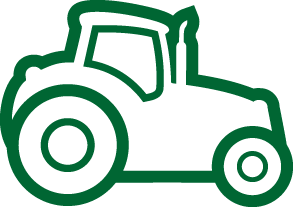NAVIGATION

GPS
Today, Agriculture demands improved productivity and efficiency. Cutting costs, saving time and ensuring the entire agricultural enterprise is more efficient and accountable, is essential to compete in domestic and global markets.
Positioning, wireless, and information technologies are changing the farmer relationship with the land, bringing them quite literally down to earth. Farmers can now manage every aspect of an agricultural operations to improve overall productivity and efficiency—from planting to harvesting, land leveling—and literally work their land by the square foot instead of the square mile.
- GPS farming systems provide precise guidance for field operations, or collection of map data on tillage, applications, planting, weeds, insect and disease infestations, cultivation and irrigation.
- Machine Control systems automate equipment to save time and costs associated with field operators.
Field data can be downloaded to office systems to analyze management practices and determine optimal strategies for infield operations. For example, a farming GPS database might include layers on field topography, soil types, surface drainage, subsurface drainage, soil testing results, rainfall, irrigation, chemical application rates, and crop yield. Once this information is gathered, you can analyze it to understand relationships between the different elements that affect crop production in a specific location.
